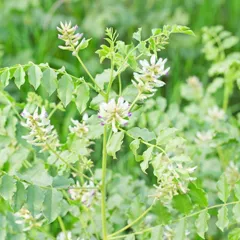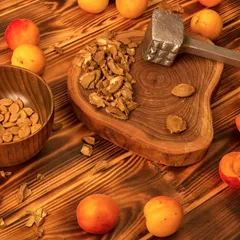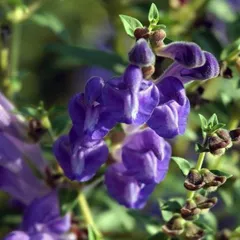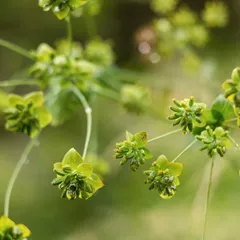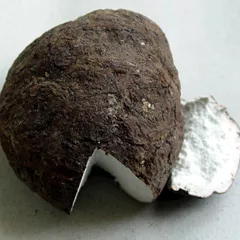Pelvic inflammatory disease according to Chinese Medicine
The information provided here is not a replacement for a doctor. You shouldn't use it for the purpose of self-diagnosing or self-medicating but rather so you can have a more informed discussion with a professional TCM practitioner.
Pelvic inflammatory disease factsheet
Possible causes and remedies:
Blood Deficiency with disharmony of Liver and Spleen
Symptoms: Anemia Vertigo Dizziness and ten other symptoms
Recommended formula: Xiao Yao San
Heat and Blood Stagnation in the Lower Burner
Symptoms: Thirst Amenorrhea Night fever and five other symptoms
Recommended formula: Tao He Cheng Qi Tang
In Chinese Medicine, pelvic inflammatory disease can be associated with ten so-called "patterns of disharmony". Chinese Medicine sees the body as a system, not a sum of isolated parts. A "pattern" is when the system's harmony is disrupted. It is not equivalent to the Western concept of "disease", as a matter of fact here pelvic inflammatory disease can be caused by ten different patterns.
To understand whether someone's pelvic inflammatory disease might be caused by a given pattern, one needs to look for signs and symptoms associated with the pattern beyond what one might typically experience from pelvic inflammatory disease alone. For instance when pelvic inflammatory disease is caused by the pattern Blood Deficiency with disharmony of Liver and Spleen, patients also experience symptoms such as chest fullness, chest pain, anemia and dizziness. Similarly, patients with Blood Deficiency with disharmony of Liver and Spleen typically exhibit empty (Xu) or wiry (Xian) pulses as well as a pale tongue.
We've listed below a description of the ten patterns associated with pelvic inflammatory disease so that you can start to get an understanding of the various possibilities according to Chinese Medicine.
Once identified, patterns are often treated using herbal formulas. Drinking herbal infusions is the most common remedy in Chinese Medicine, together with acupuncture. Here we detail below twelve formulas that can help treat the various patterns associated with pelvic inflammatory disease, depending on which pattern fits your profile.
The ten "patterns of disharmony" associated with pelvic inflammatory disease
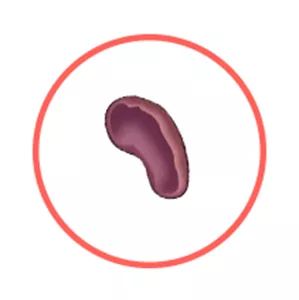
The Spleen is a so-called "Zang" Organ. Learn more about the Spleen in Chinese Medicine
Blood Deficiency with disharmony of Liver and Spleen
Pulse type(s): Empty (Xu), Wiry (Xian)
Tongue color: Pale
Recommended herbal formula: Xiao Yao San
Symptoms: Anemia Vertigo Dizziness Headaches Dry mouth Chest pain Dry throat Leukorrhea Poor appetite Chest fullness Breast distention Irregular menstruation Alternating fever and chills
Pelvic inflammatory disease might be due to Blood Deficiency with disharmony of Liver and Spleen if the condition is paired with typical pattern symptoms such as chest fullness, chest pain, anemia and dizziness. Similarly, patients with Blood Deficiency with disharmony of Liver and Spleen typically exhibit empty (Xu) or wiry (Xian) pulses as well as a pale tongue.
Read more about Blood Deficiency with disharmony of Liver and Spleen here
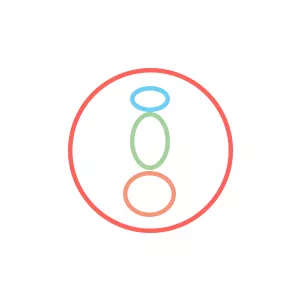
The Triple Burner is a so-called "Fu" Organ. Learn more about the Triple Burner in Chinese Medicine
Heat and Blood Stagnation in the Lower Burner
Pulse type(s): Choppy (Se), Full (Shi)
Recommended herbal formula: Tao He Cheng Qi Tang
Symptoms: Thirst Amenorrhea Night fever Irritability Dysmenorrhea Restlnessness Delirious speech Lower abdominal pain
Pelvic inflammatory disease might be due to Heat and Blood Stagnation in the Lower Burner if the condition is paired with typical pattern symptoms such as lower abdominal pain, night fever, delirious speech and irritability. Similarly, patients with Heat and Blood Stagnation in the Lower Burner typically exhibit choppy (Se) or full (Shi) pulses.
Read more about Heat and Blood Stagnation in the Lower Burner here

Rhubarb (Da Huang) is the key herb for Da Huang Mu Dan Pi Tang, a formula used for Blood Stagnation with Heat
Blood Stagnation with Heat
Pulse type(s): Rapid (Shu), Slippery (Hua)
Tongue coating: Yellow coating
Tongue color: Pale
Recommended herbal formula: Da Huang Mu Dan Pi Tang
Symptoms: Pain in the groin Alternating fever and chills Guarding of the abdominal musculature Lower abdominal distension and pain that increases with pressure
Pelvic inflammatory disease might be due to Blood Stagnation with Heat if the condition is paired with typical pattern symptoms such as lower abdominal distension and pain that increases with pressure, guarding of the abdominal musculature, pain in the groin and alternating fever and chills. Similarly, patients with Blood Stagnation with Heat typically exhibit rapid (Shu) or slippery (Hua) pulses as well as a pale tongue with yellow coating.
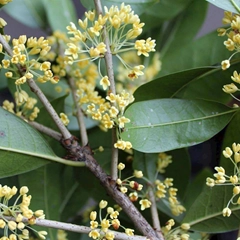
Cinnamon Twigs (Gui Zhi) is the key herb for Gui Zhi Fu Ling Wan, a formula used for Blood Stagnation and Phlegm in the Uterus
Blood Stagnation and Phlegm in the Uterus
Recommended herbal formula: Gui Zhi Fu Ling Wan
Symptoms: Painful period Abdominal pain Lochia retention Irregular menstruation Fibroids and cysts in the lower abdomen Persistent uterine bleeding of purple or dark blood Lower abdominal distension and pain that increases with pressure
Pelvic inflammatory disease might be due to Blood Stagnation and Phlegm in the Uterus if the condition is paired with typical pattern symptoms such as persistent uterine bleeding of purple or dark blood, lower abdominal distension and pain that increases with pressure, fibroids and cysts in the lower abdomen and painful period.
Read more about Blood Stagnation and Phlegm in the Uterus here

Cinnamon Twigs (Gui Zhi) is the key herb for Gui Zhi Fu Ling Wan, a formula used for Blood Stagnation in the Directing and Penetrating Vessels
Blood Stagnation in the Directing and Penetrating Vessels
Pulse type(s): Choppy (Se), Wiry (Xian)
Tongue color: Bluish-Purple
Recommended herbal formula: Gui Zhi Fu Ling Wan
Symptoms: Anxiety Breast pain Irritability Restlessness Breast lumps Painful period Umbilical pain Lochia retention Abdominal masses Breast distention Tendency to worry Dark colored blood Lower abdominal pain Irregular menstruation Brown vaginal discharge Dark clots in menstrual blood
Pelvic inflammatory disease might be due to Blood Stagnation in the Directing and Penetrating Vessels if the condition is paired with typical pattern symptoms such as irregular menstruation, brown vaginal discharge, dark clots in menstrual blood and painful period. Similarly, patients with Blood Stagnation in the Directing and Penetrating Vessels typically exhibit choppy (Se) or wiry (Xian) pulses as well as a bluish-purple tongue.
Read more about Blood Stagnation in the Directing and Penetrating Vessels here
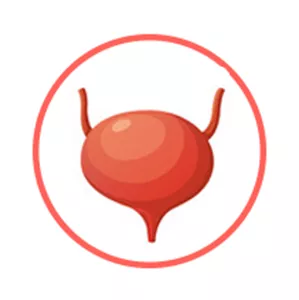
The Bladder is a so-called "Fu" Organ. Learn more about the Bladder in Chinese Medicine
Heat in Gall Bladder
Pulse type(s): Rapid (Shu), Wiry (Xian)
Tongue coating: Thick coating, Yellow coating
Tongue color: Red
Recommended herbal formula: Hao Qin Qing Dan Tang
Symptoms: Thirst Nausea Epigastrium fullness Bitter taste in the mouth Stifling sensation in the chest Spitting up bitter or sour fluids Mild chills alternating with pronounced fever Distention and pain in the chest and hypochondria
Pelvic inflammatory disease might be due to Heat in Gall Bladder if the condition is paired with typical pattern symptoms such as mild chills alternating with pronounced fever, bitter taste in the mouth, stifling sensation in the chest and spitting up bitter or sour fluids. Similarly, patients with Heat in Gall Bladder typically exhibit rapid (Shu) or wiry (Xian) pulses as well as a red tongue with thick coating, yellow coating.

The Spleen is a so-called "Zang" Organ. Learn more about the Spleen in Chinese Medicine
Spleen or Kidney Yang Deficiency
Pulse type(s): Deep (Chen), Fine (Xi)
Tongue color: Pale
Tongue shape: Swollen, Tooth-marked
Recommended herbal formula: Zhen Wu Tang
Symptoms: Edema Coughing Vomiting Dizziness Loose stools Palpitations Urinary difficulty Heavy sensation in the head Abdominal pain that worsens with cold Deep aching and heaviness in the extremities
Pelvic inflammatory disease might be due to Spleen or Kidney Yang Deficiency if the condition is paired with typical pattern symptoms such as abdominal pain that worsens with cold, urinary difficulty, deep aching and heaviness in the extremities and dizziness. Similarly, patients with Spleen or Kidney Yang Deficiency typically exhibit deep (Chen) or fine (Xi) pulses as well as a pale tongue.
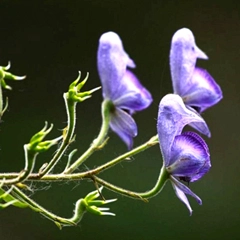
Prepared Aconite (Zhi Fu Zi) is the key herb for Zhen Wu Tang, a formula used for Exterior Cold invading the Interior
Exterior Cold invading the Interior
Pulse type(s): Deep (Chen), Fine (Xi)
Tongue coating: Thin white coating
Recommended herbal formula: Zhen Wu Tang
Symptoms: Dizziness Unsteadiness Generalized twitching Palpitations in the epigastrium Sweating that doesn't reduce fever
Pelvic inflammatory disease might be due to Exterior Cold invading the Interior if the condition is paired with typical pattern symptoms such as sweating that doesn't reduce fever, palpitations in the epigastrium, dizziness and generalized twitching. Similarly, patients with Exterior Cold invading the Interior typically exhibit deep (Chen) or fine (Xi) pulses as well as a tongue with thin white coating.

The Spleen is a so-called "Zang" Organ. Learn more about the Spleen in Chinese Medicine
Spleen Yang Deficiency
Pulse type(s): Deep (Chen), Slow (Chi), Weak (Ruo)
Tongue color: Pale
Recommended herbal formulas: Zhen Wu Tang Bu Zhong Yi Qi Tang, Yi Huang Tang, Huang Tu Tang, Zhen Wu Tang
Symptoms: Gas Edema Chills Fatigue Bloating Lassitude Cold limbs Weak Limbs Loose stools Poor appetite Pale complexion Feeling of cold Vagina discharge Sallow complexion Desire to lie down curled up Undigested food in the stools Slight abdominal distension after eating Abdominal pain and distension relieved by pressure and warmth
Generally speaking, Spleen Yang Deficiency often develops from Spleen Qi Deficiency, but it is more extensive and severe. The common manifestations are these related to digestive functions such as loose stools, poor appetite, slight abdominal distension and pain after eating, gas and bloating. Since the Spleen fails to transport the Food Qi to the body, patients also suffer from general fatigue, lassitude, weak limbs, pale tongue and face. Patients prefers to lie down.
On top of above, the Yang Deficiency also brings in additional Cold symptoms, such as a cold feeling and cold limbs. It is because Spleen Yang fails to warm the body and Organs. Therefore, the body metabolism get slower and some food are not digested properly and passes directly into the stools.
Since the Spleen fails to perform the function of transforming and transporting fluids, the circulation of Body Fluids is disturbed, causing symptoms such as Oedema, vaginal discharge and Lung mucus. The Yang Deficiency pattern is even more likely to form Dampness and Phlegm.

The Bladder is a so-called "Fu" Organ. Learn more about the Bladder in Chinese Medicine
Heat Excess in the Liver or Gallbladder
Pulse type(s): Full (Shi)
Tongue coating: Yellow coating
Tongue color: Red
Recommended herbal formula: Long Dan Xie Gan Tang
Symptoms: Headaches Dizziness Irritability Short temper Red and sore eyes Painful urination Diminished hearing Swelling in the ears Foul-smelling leukorrhea Bitter taste in the mouth Fixed pain in the hypochondria Shortened menstrual cycle in women Swollen and itchy external genitalia
Pelvic inflammatory disease might be due to Heat Excess in the Liver or Gallbladder if the condition is paired with typical pattern symptoms such as fixed pain in the hypochondria, headaches, dizziness and red and sore eyes. Similarly, patients with Heat Excess in the Liver or Gallbladder typically exhibit full (Shi) pulses as well as a red tongue with yellow coating.
Read more about Heat Excess in the Liver or Gallbladder here
The twelve herbal formulas that might help with pelvic inflammatory disease



The top herbs in Zhen Wu Tang are Prepared Aconite (Zhi Fu Zi), Atractylodes Rhizomes (Bai Zhu) and Poria-Cocos Mushrooms (Fu Ling)
Zhen Wu Tang
Source date: 220 AD
Number of ingredients: 5 herbs
Key actions: Warms and tonifies the Yang and Qi of the Spleen and Kidneys. Eliminates Dampness.
Why might Zhen Wu Tang help with pelvic inflammatory disease?
Because it is a formula often recommended to help with the patterns Spleen or Kidney Yang Deficiency, Exterior Cold invading the Interior and Spleen Yang Deficiency which are sometimes associated with pelvic inflammatory disease. If any of these patterns look like something you might suffer from, this formula might help (although please seek confirmation with a professional practitioner beforehand).
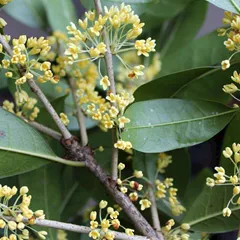


The top herbs in Gui Zhi Fu Ling Wan are Cinnamon Twigs (Gui Zhi), Poria-Cocos Mushrooms (Fu Ling) and Red Peony Roots (Chi Shao)
Gui Zhi Fu Ling Wan
Source date: 220 AD
Number of ingredients: 5 herbs
Key actions: Promotes Blood and lymphatic circulation, thus eleminates Blood Stagnation. Softens and resolves hard lumps such as cysts and fibroids.
Why might Gui Zhi Fu Ling Wan help with pelvic inflammatory disease?
Because it is a formula often recommended to help with the patterns Blood Stagnation and Phlegm in the Uterus and Blood Stagnation in the Directing and Penetrating Vessels which are sometimes associated with pelvic inflammatory disease. If any of these patterns look like something you might suffer from, this formula might help (although please seek confirmation with a professional practitioner beforehand).
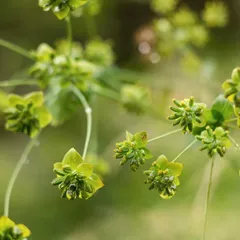


The top herbs in Xiao Yao San are Bupleurum Roots (Chai Hu), Dong Quai (Dang Gui) and White Peony Roots (Bai Shao)
Xiao Yao San
Source date: 1107 AD
Number of ingredients: 6 herbs
Key actions: Harmonizes the function of Liver and Spleen. Relieves Liver Qi stagnation. Nourishes the Blood.
Why might Xiao Yao San help with pelvic inflammatory disease?
Because it is a formula often recommended to help treat Blood Deficiency with disharmony of Liver and Spleen, a pattern sometimes associated with pelvic inflammatory disease. If it looks like you might suffer from Blood Deficiency with disharmony of Liver and Spleen, this formula might help (although please seek confirmation with a professional practitioner beforehand).
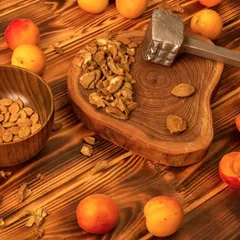


The top herbs in Tao He Cheng Qi Tang are Peach Kernels (Tao Ren), Rhubarb (Da Huang) and Cinnamon Twigs (Gui Zhi)
Tao He Cheng Qi Tang
Source date: 220 AD
Number of ingredients: 5 herbs
Key actions: Dispels Heat and. Eliminates Blood Stagnation.
Why might Tao He Cheng Qi Tang help with pelvic inflammatory disease?
Because it is a formula often recommended to help treat Heat and Blood Stagnation in the Lower Burner, a pattern sometimes associated with pelvic inflammatory disease. If it looks like you might suffer from Heat and Blood Stagnation in the Lower Burner, this formula might help (although please seek confirmation with a professional practitioner beforehand).

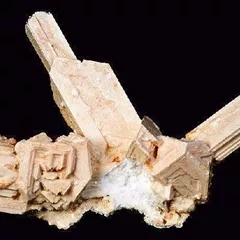
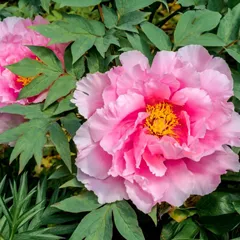
The top herbs in Da Huang Mu Dan Pi Tang are Rhubarb (Da Huang), Mirabilites (Mang Xiao) and Mudan Peony Bark (Mu Dan Pi)
Da Huang Mu Dan Pi Tang
Source date: 220 AD
Number of ingredients: 5 herbs
Key actions: Clears Stagnant Heat in the intestines. Reduces swelling and disperses lumps.
Why might Da Huang Mu Dan Pi Tang help with pelvic inflammatory disease?
Because it is a formula often recommended to help treat Blood Stagnation with Heat, a pattern sometimes associated with pelvic inflammatory disease. If it looks like you might suffer from Blood Stagnation with Heat, this formula might help (although please seek confirmation with a professional practitioner beforehand).
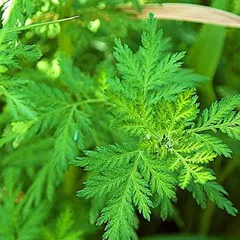

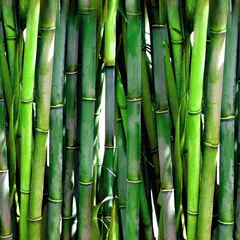
The top herbs in Hao Qin Qing Dan Tang are Sweet Wormwood Herbs (Qing Hao), Baikal Skullcap Roots (Huang Qin) and Bamboo Shavings (Zhu Ru)
Hao Qin Qing Dan Tang
Source date: Qing Dynasty
Number of ingredients: 10 herbs
Key actions: Clears Heat and relieves acute conditions of the Gallbladder. Relieves acute Damp-Heat syndromes. Resolves Phlegm. Harmonizes the Stomach.
Why might Hao Qin Qing Dan Tang help with pelvic inflammatory disease?
Because it is a formula often recommended to help treat Heat in Gall Bladder, a pattern sometimes associated with pelvic inflammatory disease. If it looks like you might suffer from Heat in Gall Bladder, this formula might help (although please seek confirmation with a professional practitioner beforehand).
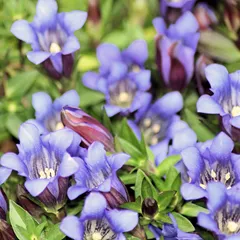


The top herbs in Long Dan Xie Gan Tang are Chinese Gentian (Long Dan Cao), Baikal Skullcap Roots (Huang Qin) and Cape Jasmine Fruits (Zhi Zi)
Long Dan Xie Gan Tang
Source date: 1682 AD
Number of ingredients: 10 herbs
Key actions: Clears Heat and Fire from the Liver and Gallbladder. Clears and drains Damp-Heat from the Lower Burner.
Why might Long Dan Xie Gan Tang help with pelvic inflammatory disease?
Because it is a formula often recommended to help treat Heat Excess in the Liver or Gallbladder, a pattern sometimes associated with pelvic inflammatory disease. If it looks like you might suffer from Heat Excess in the Liver or Gallbladder, this formula might help (although please seek confirmation with a professional practitioner beforehand).
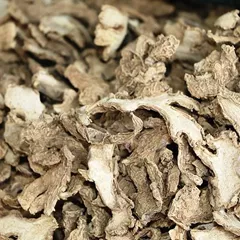


The top herbs in Li Zhong Wan are Dried Ginger (Gan Jiang), Ginseng (Ren Shen) and Atractylodes Rhizomes (Bai Zhu)
Li Zhong Wan
Source date: 220 AD
Number of ingredients: 4 herbs
Key actions: Warms the Middle Burner. Strengthens the Spleen and Stomach.
Why might Li Zhong Wan help with pelvic inflammatory disease?
Because it is a formula often recommended to help treat , a pattern sometimes associated with pelvic inflammatory disease. If it looks like you might suffer from , this formula might help (although please seek confirmation with a professional practitioner beforehand).
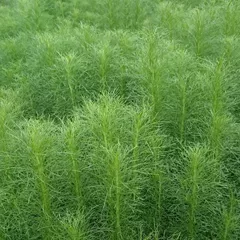


The top herbs in Yin Chen Hao Tang are Virgate Wormwood (Yin Chen), Cape Jasmine Fruits (Zhi Zi) and Rhubarb (Da Huang)
Yin Chen Hao Tang
Source date: 220 AD
Number of ingredients: 3 herbs
Key actions: Clears heat. Resolves dampness. Reduces jaundice.
Why might Yin Chen Hao Tang help with pelvic inflammatory disease?
Because it is a formula often recommended to help treat , a pattern sometimes associated with pelvic inflammatory disease. If it looks like you might suffer from , this formula might help (although please seek confirmation with a professional practitioner beforehand).
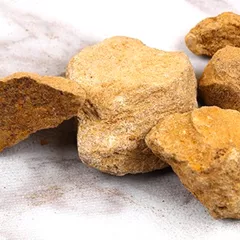
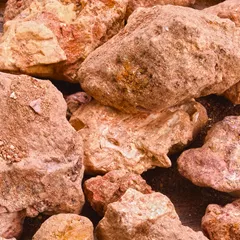
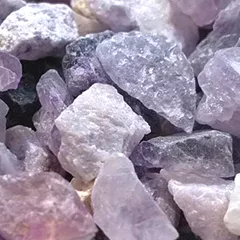
The top herbs in Zhen Ling Dan are Limonitum (Yu Yu Liang), Red Halloysite (Chi Shi Zhi) and Fluorite (Zi Shi Ying)
Zhen Ling Dan
Source date: 1107 AD
Number of ingredients: 8 herbs
Key actions: Stabilizes uterine bleeding . Clears Blood Stagnation .
Why might Zhen Ling Dan help with pelvic inflammatory disease?
Because it is a formula often recommended to help treat , a pattern sometimes associated with pelvic inflammatory disease. If it looks like you might suffer from , this formula might help (although please seek confirmation with a professional practitioner beforehand).
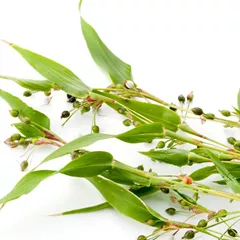
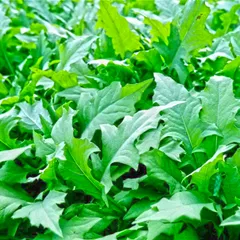

The top herbs in Yi Yi Fu Zi Bai Jiang San are Job's Tears (Yi Yi Ren), Patrinia (Bai Jiang Cao) and Prepared Aconite (Zhi Fu Zi)
Yi Yi Fu Zi Bai Jiang San
Source date: 220 AD
Number of ingredients: 3 herbs
Key actions: Expels pus and reduces abscesses. Warms the Yang. Disperses clumping.
Why might Yi Yi Fu Zi Bai Jiang San help with pelvic inflammatory disease?
Because it is a formula often recommended to help treat , a pattern sometimes associated with pelvic inflammatory disease. If it looks like you might suffer from , this formula might help (although please seek confirmation with a professional practitioner beforehand).


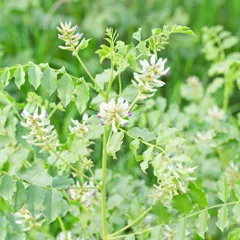
The top herbs in Huang Qin Tang are Baikal Skullcap Roots (Huang Qin), White Peony Roots (Bai Shao) and Liquorice (Gan Cao)
Huang Qin Tang
Source date: 220 AD
Number of ingredients: 4 herbs
Key actions: Clears Heat. Alleviates dysenteric disorders. Stops pain . Harmonizes the Middle Burner.
Why might Huang Qin Tang help with pelvic inflammatory disease?
Because it is a formula often recommended to help treat , a pattern sometimes associated with pelvic inflammatory disease. If it looks like you might suffer from , this formula might help (although please seek confirmation with a professional practitioner beforehand).
Symptoms related to pelvic inflammatory disease
Dizziness Irregular menstruation Irritability Headaches Poor appetite Breast distention Alternating fever and chills Lower abdominal pain Thirst Lower abdominal distension and pain that increases with pressure

